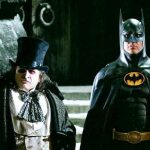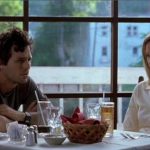In Part 1 of this 3-part epic, Alex begins to look at the factors that go into making Michael Bay movies what they are, and why Alex loves them.
I love Michael Bay movies for a number of reasons, but primarily because they’re awesome. Every one of his movies is entertaining, and even the ones that are absolutely terrible (Armageddon, Pearl Harbor, 65% of Transformers: Revenge of the Fallen) are at least hilariously bad. His movies are always interesting for a variety of reasons, but the core of what makes them as interesting as they are is Michael Bay himself. His name tends to evoke horror in the minds of film critics, even though all but one of Bay’s movies have been big hits in both America and overseas. People all over the world love his films, but not the people who get paid to write about them. Bay is the most notable action director working today, and when you see a Michael Bay film you can expect non-stop action, the hottest extras you’ve ever seen, and a fast-cutting visual style. Bay-sically, his movies are just epic pop music videos but with humanoid robots and even more product placement than usual… so they’re kind of like 2 hour Lady Gaga videos.
It is clear that Bay loves making action movies, and in interviews and his commentary tracks, it becomes evident that he also has an elaborate vision of himself as a tough guy. In every one of his commentary tracks, he points out at least one instance where he has to operate the camera on set himself for more dangerous shots, calling himself the only person on set brave enough to do so. Discussing shooting a scene on an aircraft carrier for Pearl Harbor, Bay mentions that there was a “Line of Death” that no camera person would go past, as it was too dangerous with airplanes taking off. But for a necessary shot, Bay himself grabbed a camera and went, in his words, “like 5 feet past the Line of Death.” Bay is also oddly obsessed with competition between his and other blockbusters, which again becomes evident on commentary tracks: Bay talks about how he shot, on average, thirty more set-ups each day than JJ Abrams’ Mission: Impossible III, and how Len Wiseman is a total pussy because Live Free or Die Hard changed its release date to avoid competition with Bay’s Transformers. He also mentions how Live Free or Die Hard couldn’t get support from the US Army, while Transformers did. Bay has “a hotline to the Pentagon… but I guess they just don’t have the juice.” (Although it’s pretty clear why the government wouldn’t support Live Free or Die Hard when you watch the truly insane decisions that fighter pilot makes towards the end.)
It’s not enough to merely pick on other people, however, as Bay is a tough guy who sees himself on the right side, fighting the good fight. He wants to fight against the evils of the Decepticons, but since Decepticons don’t exist, he must channel that energy to the evil people in his life: movie studios. He often mentions how he has to fight with the studio in order to get his way on set. In the commentary track for The Rock, Bay details how Disney wanted him to shoot in Los Angeles instead of on Alcatraz itself, where the film is set. Bay was not hearing this noise. He went right up to the studio heads and with his shirt unbuttoned (maybe), muscles flexed (probably), his trademark hair blowing in the wind (unquestionably), Bay said that he’s “got to shoot on this island, because this island is just so fucking bitchin’.” When money was running tight on his directorial debut Bad Boys, Bay again fought with the studio heads for the money to shoot the climactic explosion. He ended up writing a $25 000 cheque to the studio (a quarter of his director wages) in order to get the shot, which is a pretty badass way to throw your money around. Bay doesn’t go to strip clubs and make it rain (although he probably does that as well), he goes to hangars and makes everything there explode. He’s a special brand of badass. Bay also likes to fight against the scripts he is given, always choosing to rewrite dialogue with his actors as production is ongoing. He likes to let his actors improvise extensively, and sometimes adds his own visual gags into the mix (although these visual gags are typically mostly unfunny: most of the jokes about Sam Witwicky’s dog were written by Bay himself). Bay often isn’t even lucky enough to have a completed script when going into production: Bad Boys had a terrible script that needed to be mostly re-written and improvised by Bay and his stars Martin Lawerence and Will Smith, as the original script was written for Dana Carvey and Jon Lovitz (seriously), and the Rock was green-lit before its screenplay was completed. This improvisation seems to lead to a lot of meetings with studio heads during production, which then leads to Bay repeatedly proclaiming in commentary tracks that the studio tends to thing that he is “out of [his] mind.”
While he has his rebellious tendencies to fight against the studios themselves, Bay always wants to satisfy as many paying customers as possible. Bay’s grandfather once told him that “if you want to make money in this world, whether you make jeans or whatever, you sell to the middle of the country,” and Bay’s consistent dedication to pleasing Middle America proves he believes in this. He and Jack Donaghy would get along swimmingly. Bay extensively tests all of his films through focus groups, paying attention to their every move. Whenever he sees too many people going to the washroom at one point, Bay’s first thought isn’t that they all drank too much Pepsi, it’s that they’re pissing because nothing on the screen is currently exploding. This is the reason The Rock has that absurd and unnecessary (but still totally fucking awesome) San Francisco car chase. When Bay is asked about whether or not this intensive test screening process hurts his film (and filmmaking in general), he says that these are the people who you’re making the movie for, so you should tailor it to their desires by way of comment cards. He found out how much he enjoyed an audience’s reaction to his work while screening his thesis film, and “saw 350 people looking at the screen, laughing,” which helped to ignite his crowd-pleasing sensibilities. Bay doesn’t understand why some other directors have such disdain for the test screening process: Bay’s goal is to actually see people respond positively to his work, while other directors (like Darren Aronofsky’s punk ass) seem to craft their movies in a way that leaves them personally satisfied. In the commentary track for the respective films, Bay mentions that focus groups improved his films by allowing him to realize he needed to shoot two extra scenes for Transformers, removing a shot from the Rock that audiences deemed too gruesome, and adding more story exposition scenes to Bad Boys (which apparently means that Bad Boys features story exposition somewhere).
In keeping with his strategy of making films for Middle America, Bay likes to make sure the characters and stories in his films are accessible to their audience. While this applies to an extent in all of his movies, it is most notable in Transformers. Bay describes that film as a relationship between a boy and his first car, and in the commentary track he discusses the methods he used to make the film accessible. The main character Sam Witwicky (Shia LaBouef) visits a number of generic urban settings, including a classroom, in order to increase the accessibility. Bay states that the classroom is identifiable to everybody, because “every guy has had this experience. We have all been in this classroom.” Well, probably not that specific classroom: I don’t remember every single person in my high school classes being ridiculously good-looking.
Bay’s extreme patriotism is also present in Transformers, as it is in every other movie he has made. Every car Transformer in the film is an American-made car, and there is extensive glorification of the military throughout the movie. Since he paints the military in such a favourable light, Bay is often able to use new equipment or vehicles before other filmmakers. His aforementioned hotline to the Pentagon exists because Bay makes the military “look good when I do my movies.” In the climactic battle, everyman Sam and the army meet up to fight alongside the Autobots, at which point Captain William Lennox (Josh “I have no idea why I married Fergie either” Duhamel) has to convince Sam to help them fight. After Lennox says to Sam, “you are a soldier now!” the audience watches the transformation of the everyman into a mythical action hero who defeats a 50-foot tall ninja robot. And it’s all because the American military had faith in him!
Bay likes to keep up this dedication to his Middle America audience by making sure that his crews stay American. He talks about doing as many stunts as possible in-camera as opposed to through CGI, partially for the added realism but seemingly primarily to keep more American stunt people employed. Bay has also used the same crew since The Rock, referring to them as a sort of family. When it came time to shoot the first Transformers film, Dreamworks told Bay to shoot in Australia and Canada for financial reasons, but Bay felt such a loyalty to his crew that he gave up 30% of his director fee in order to shoot at home with his hard working, middle class gang of real Americans. And in a quote that further drives home the already absurd patriotism in his movies, Bay states “American movies that portray America should be made in America…” which is just a slightly more eloquent way to say “U-S-A! U-S-A! U-S-A!”
Check back next week for Part 2, where Alex will take a more in-depth look at the commercial environments, both past and present, that have influenced Bay’s work.





Comments